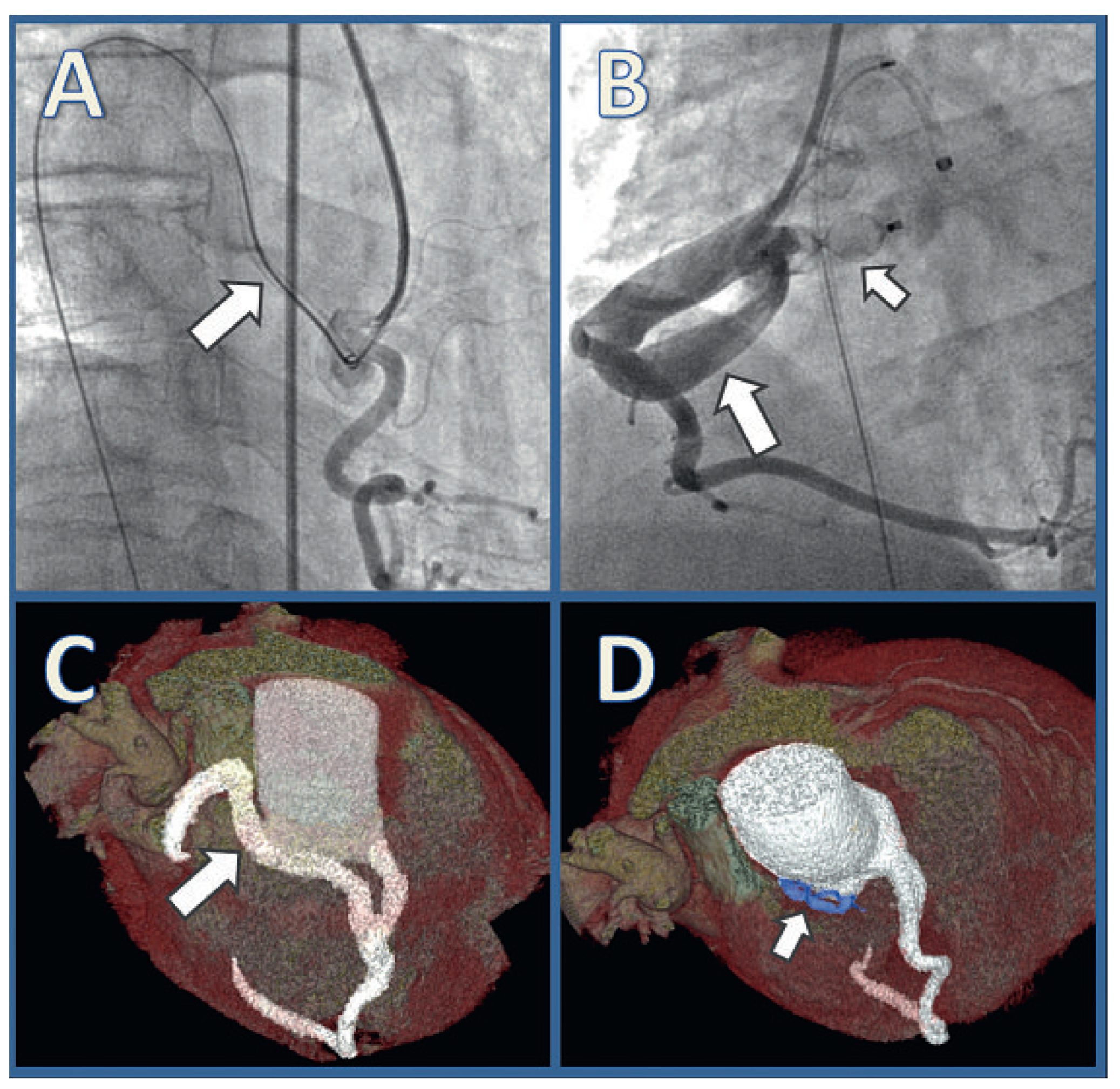Transcatheter Closure of a Large Right Coronary Artery Fistula in a Patient with Bacterial Endocarditis
Funding
References
- Effler, D.B.; Sheldon, W.C.; Turner, J.J.; Groves, L.K. Coronary arteriovenous fistulas: Diagnosis and surgical management. Report of fifteen cases. Surgery. 1967, 61, 41–50. [Google Scholar] [PubMed]
- Gillebert, C.; Van Hoof, R.; Van de Werf, F.; Piessens, J.; De Geest, H. Coronary artery fistulas in an adult population. Eur Heart J. 1986, 7, 437–443. [Google Scholar] [CrossRef] [PubMed]
- Liberthson, R.R.; Sagar, K.; Berkoben, J.P.; Weintraub, R.M.; Levine, F.H. Congenital coronary arteriovenous fistula. Report of 13 patients, review of the literature and delineation of management. Circulation. 1979, 59, 849–854. [Google Scholar] [PubMed]
- Gwoda, S.T.; Latson, L.A.; Kutty, S.; Prieto, L.R. Intermediate to Long-Term Outcome Following Congenital Coronary Artery Fistulae Closure With Focus on Thrombus Formation. Am J Cardiol. 2011, 107, 302–308. [Google Scholar] [CrossRef] [PubMed]
- Reidy, J.F.; Sowton, E.; Ross, D.N. Transcatheter occlusion of coronary to bronchial anastomosis by detachable balloon combined with coronary angioplasty at same procedure. Br Heart J. 1983, 49, 284–287. [Google Scholar] [CrossRef] [PubMed]

© 2011 by the author. Attribution - Non-Commercial - NoDerivatives 4.0.
Share and Cite
Toggweiler, S.; Leipsic, J.; Wijesinghe, N.; Carere, R.G. Transcatheter Closure of a Large Right Coronary Artery Fistula in a Patient with Bacterial Endocarditis. Cardiovasc. Med. 2011, 14, 105. https://doi.org/10.4414/cvm.2011.01574
Toggweiler S, Leipsic J, Wijesinghe N, Carere RG. Transcatheter Closure of a Large Right Coronary Artery Fistula in a Patient with Bacterial Endocarditis. Cardiovascular Medicine. 2011; 14(3):105. https://doi.org/10.4414/cvm.2011.01574
Chicago/Turabian StyleToggweiler, Stefan, Jonathon Leipsic, Namal Wijesinghe, and Ronald G. Carere. 2011. "Transcatheter Closure of a Large Right Coronary Artery Fistula in a Patient with Bacterial Endocarditis" Cardiovascular Medicine 14, no. 3: 105. https://doi.org/10.4414/cvm.2011.01574
APA StyleToggweiler, S., Leipsic, J., Wijesinghe, N., & Carere, R. G. (2011). Transcatheter Closure of a Large Right Coronary Artery Fistula in a Patient with Bacterial Endocarditis. Cardiovascular Medicine, 14(3), 105. https://doi.org/10.4414/cvm.2011.01574



